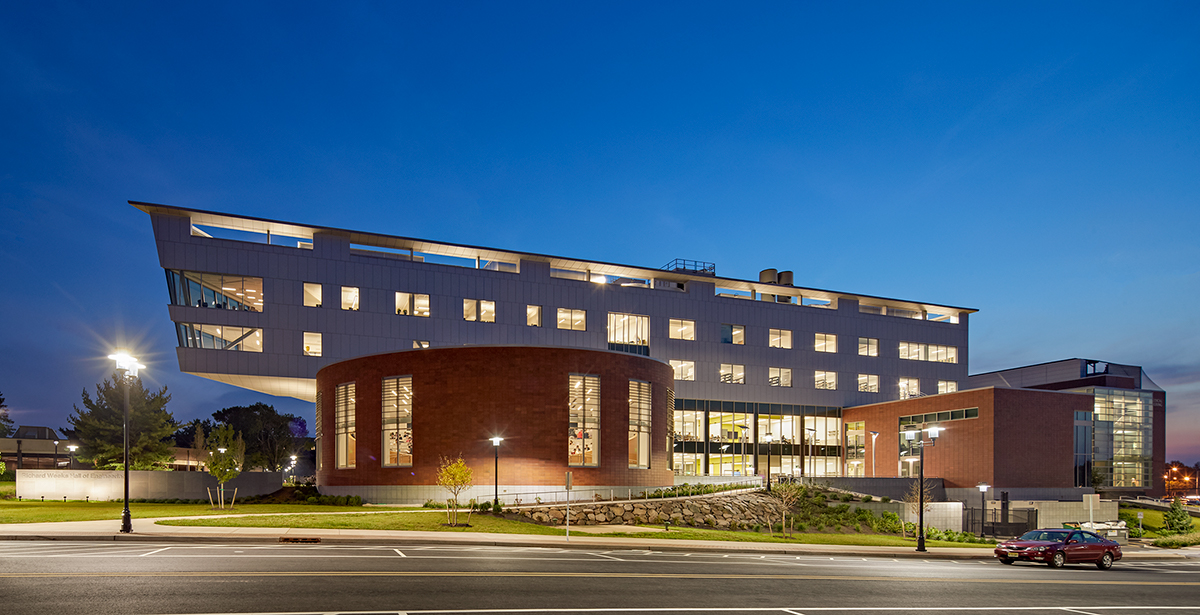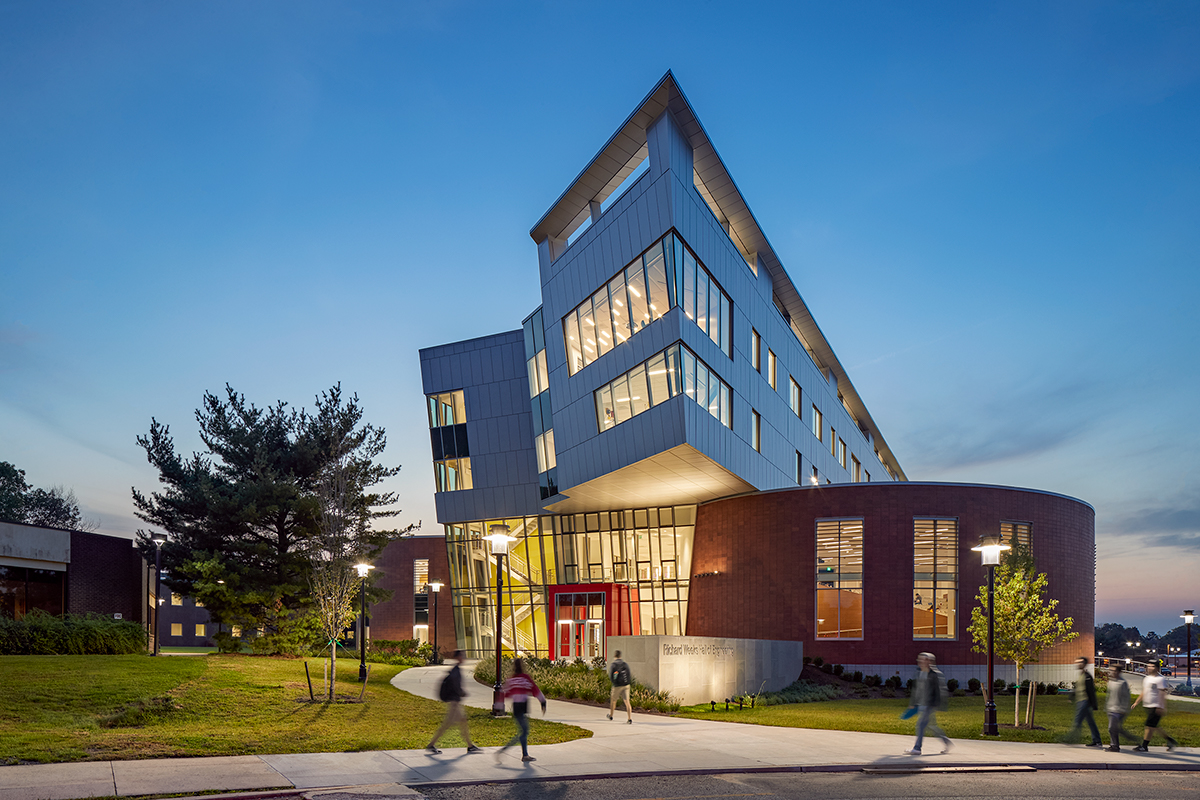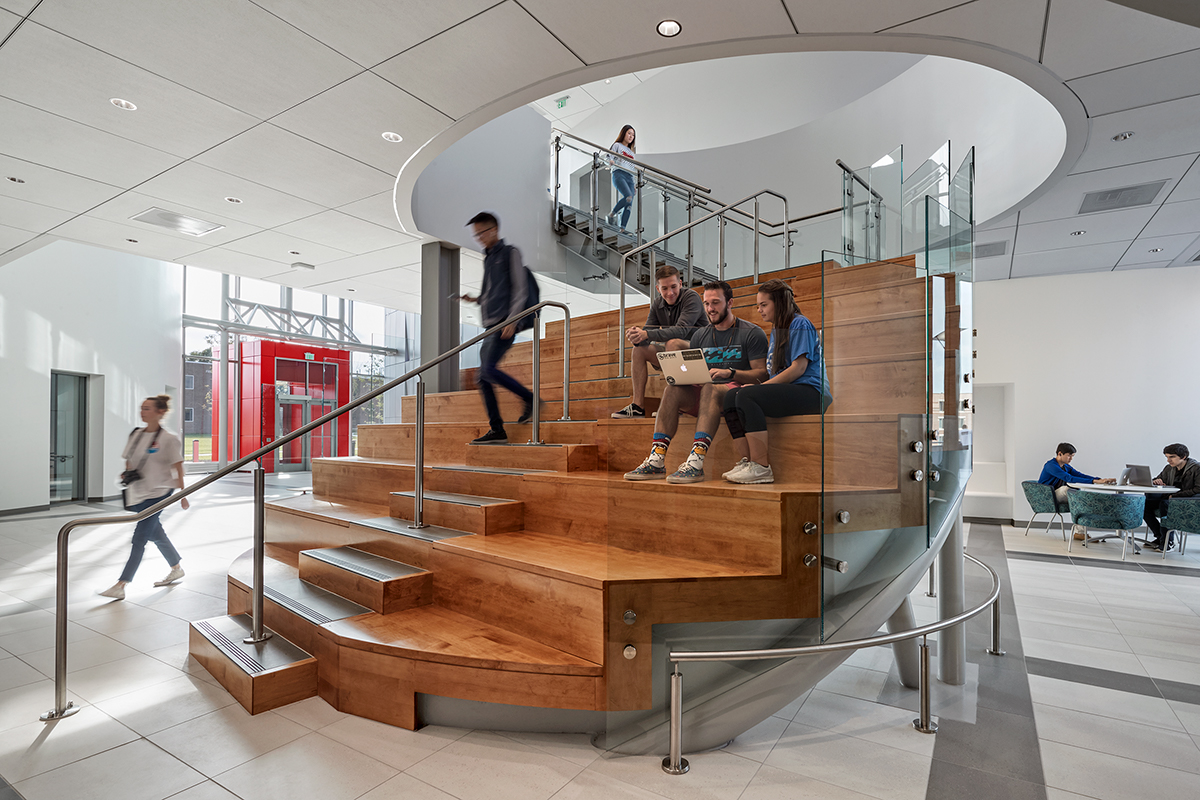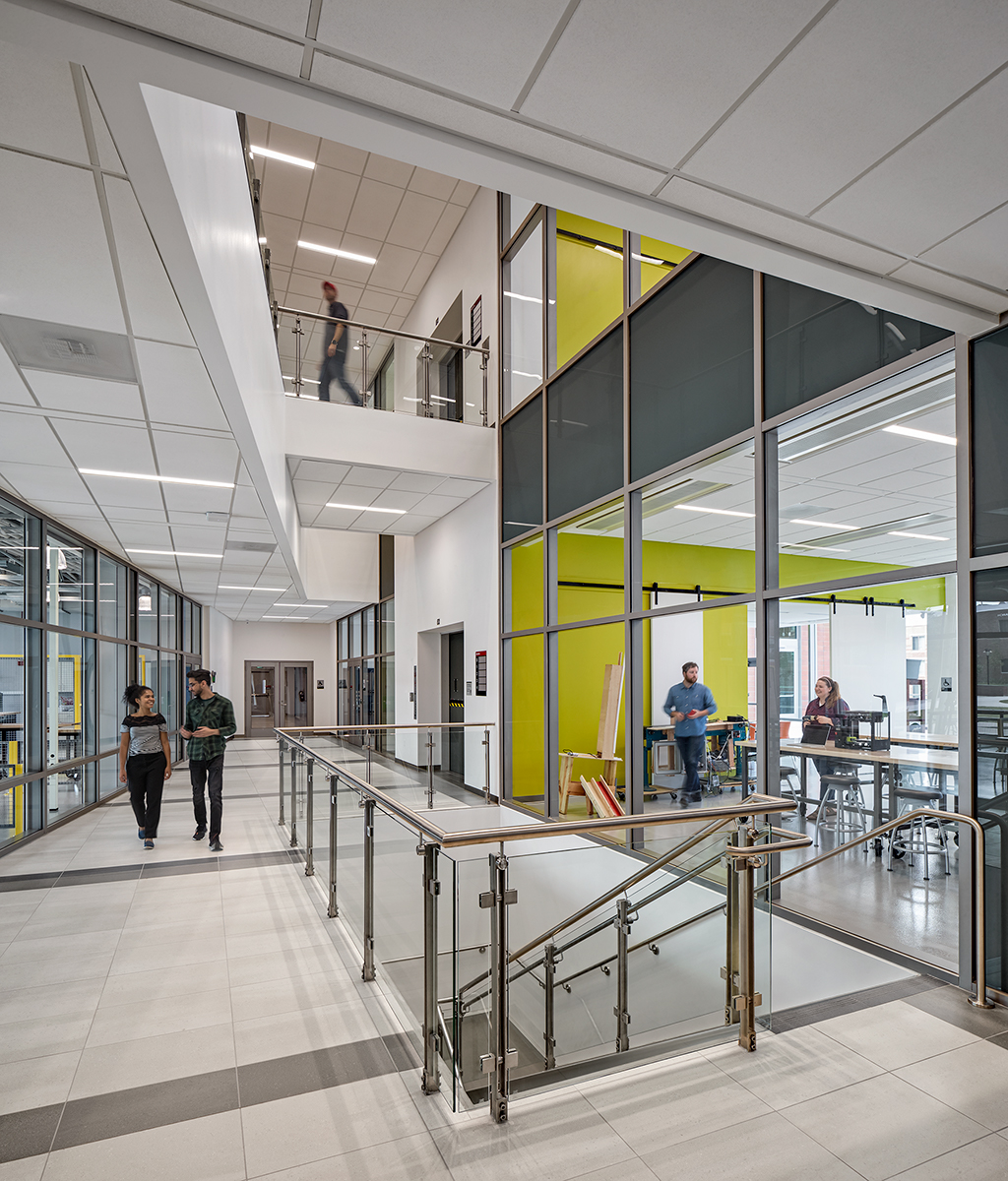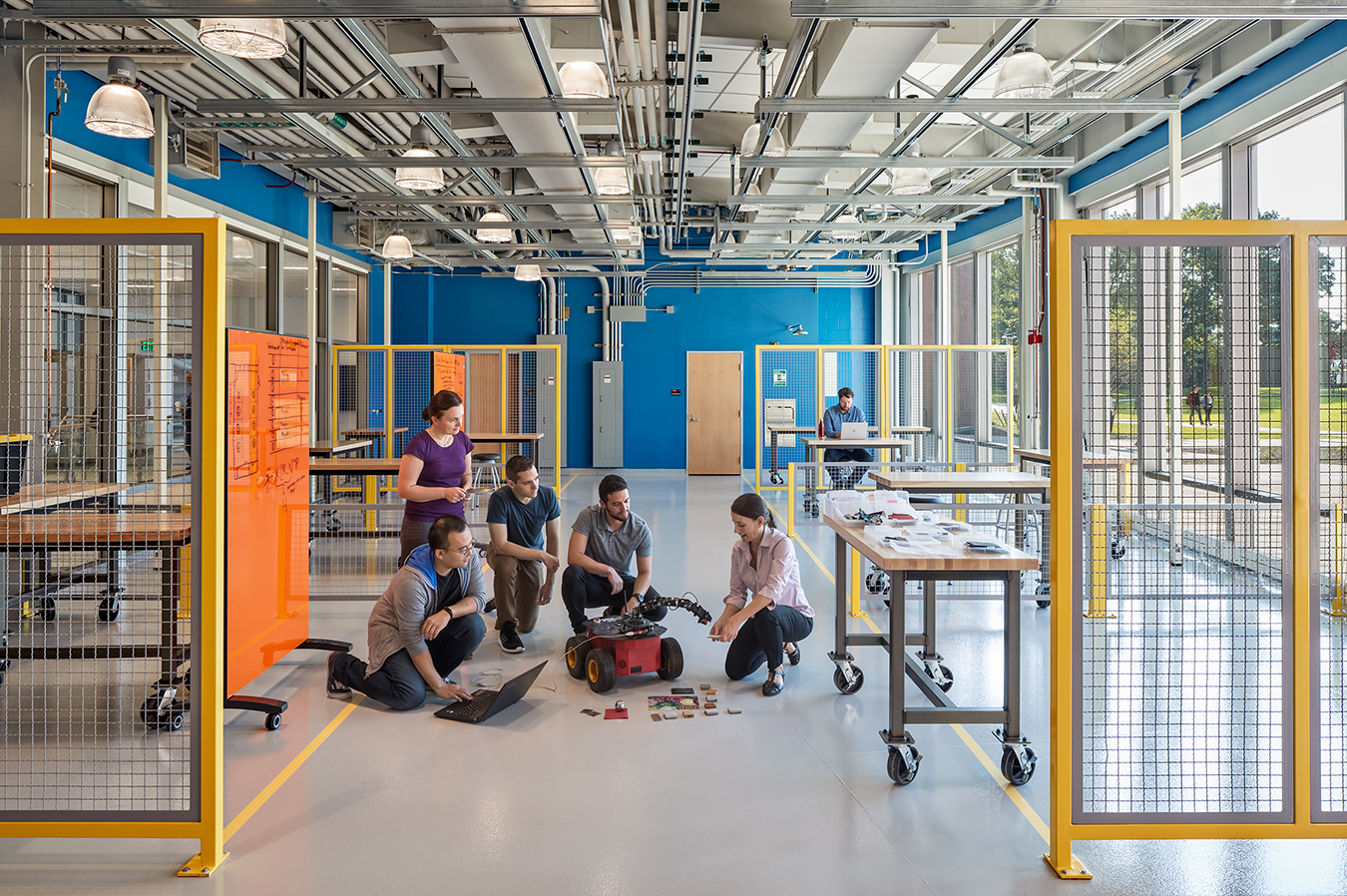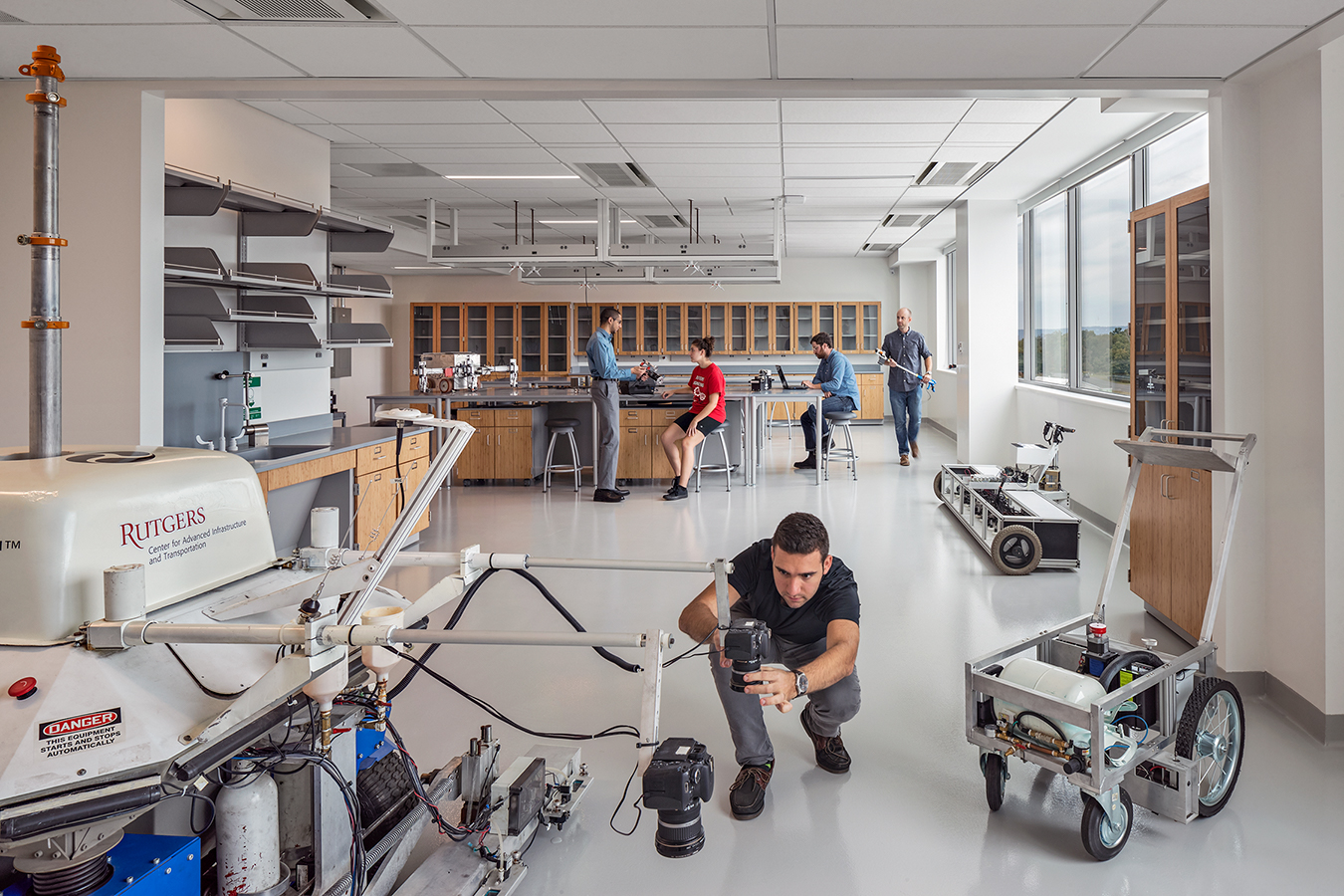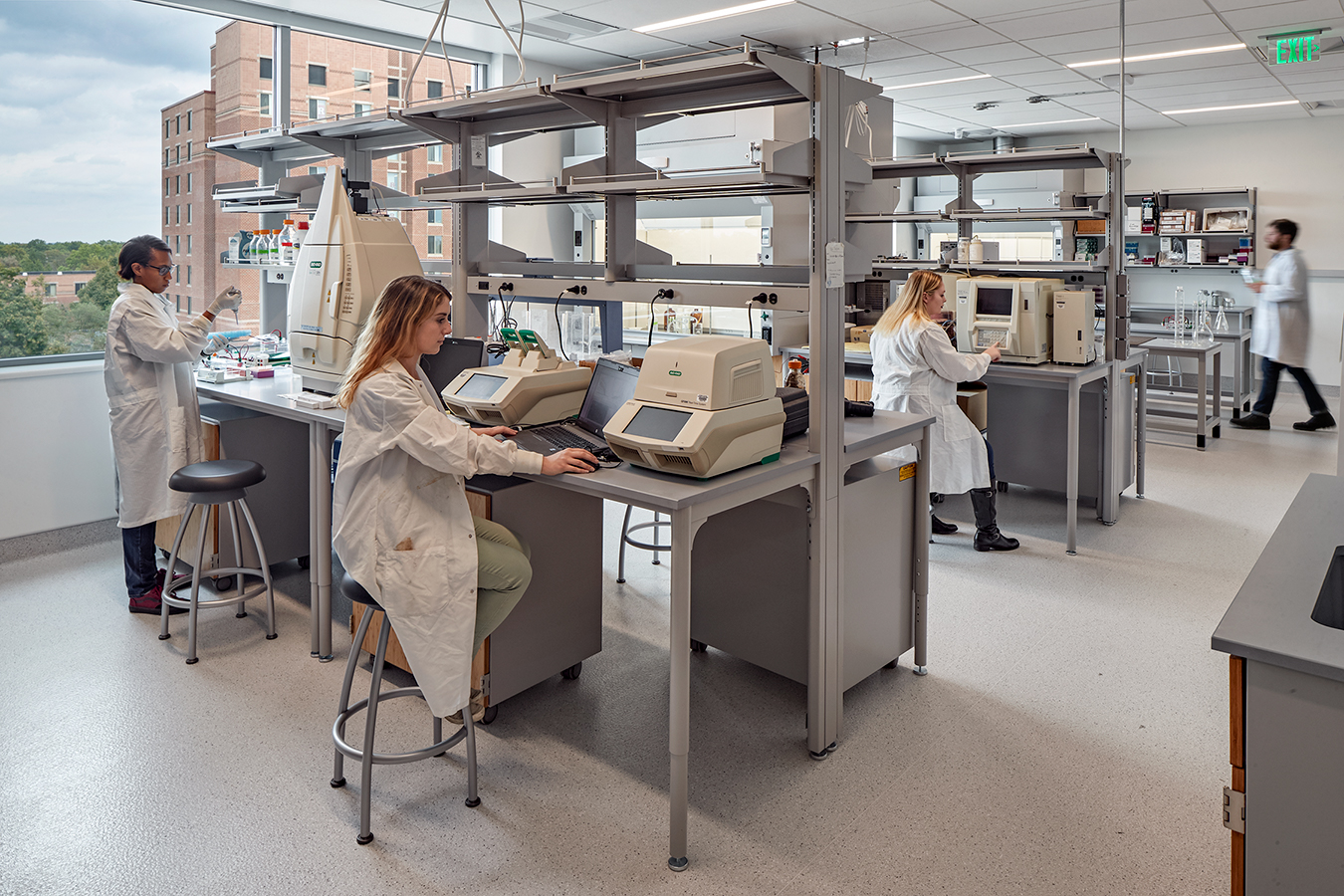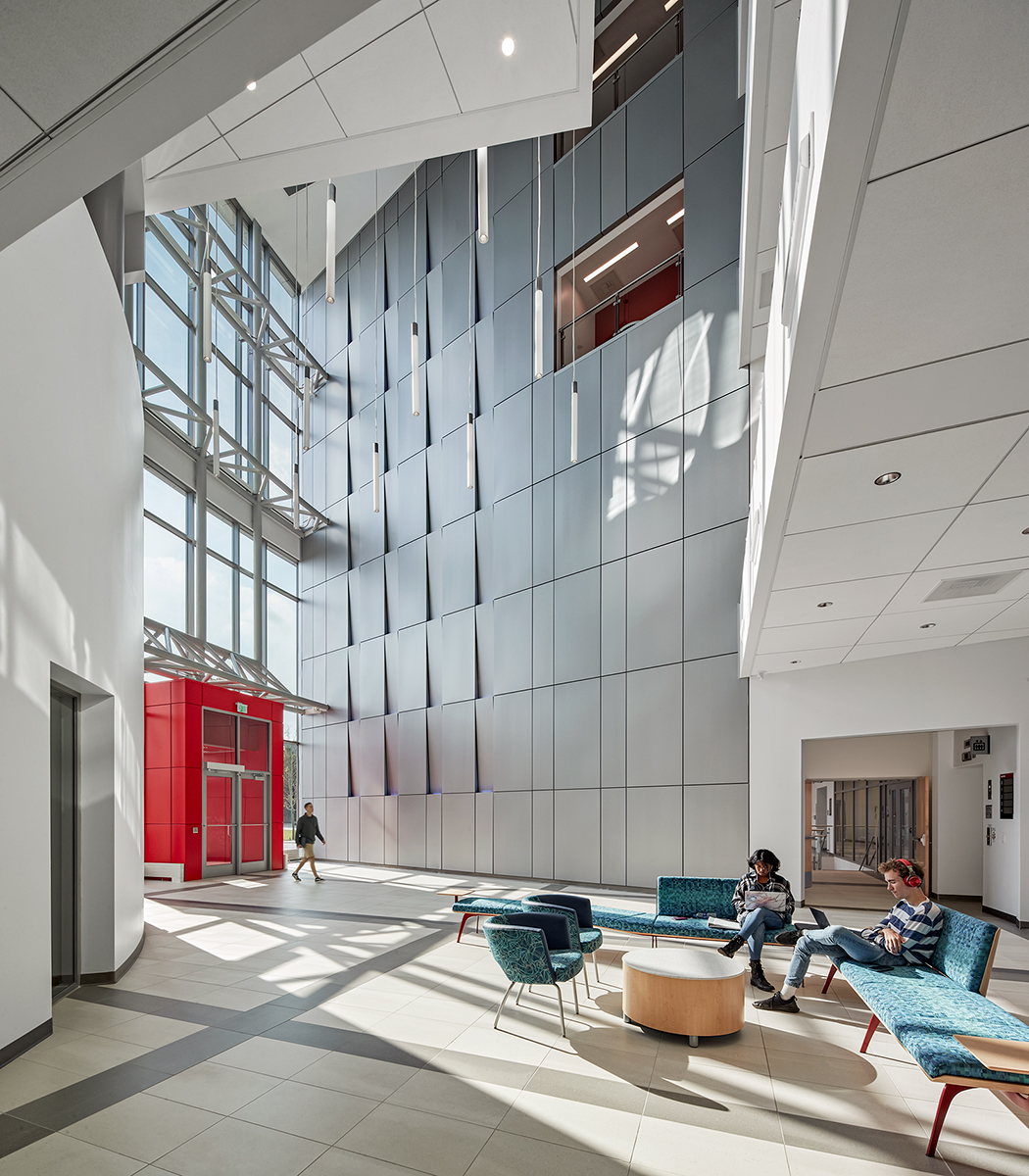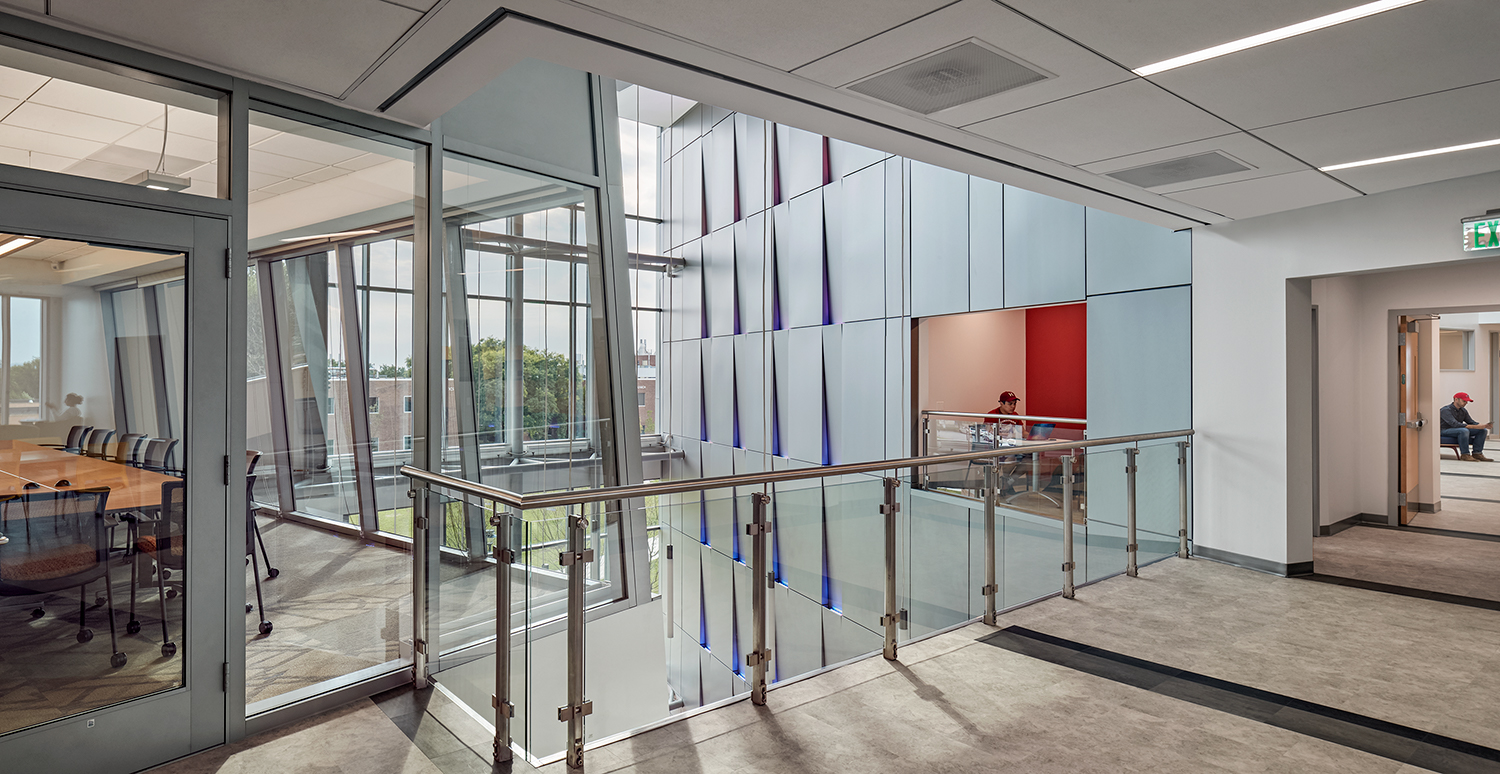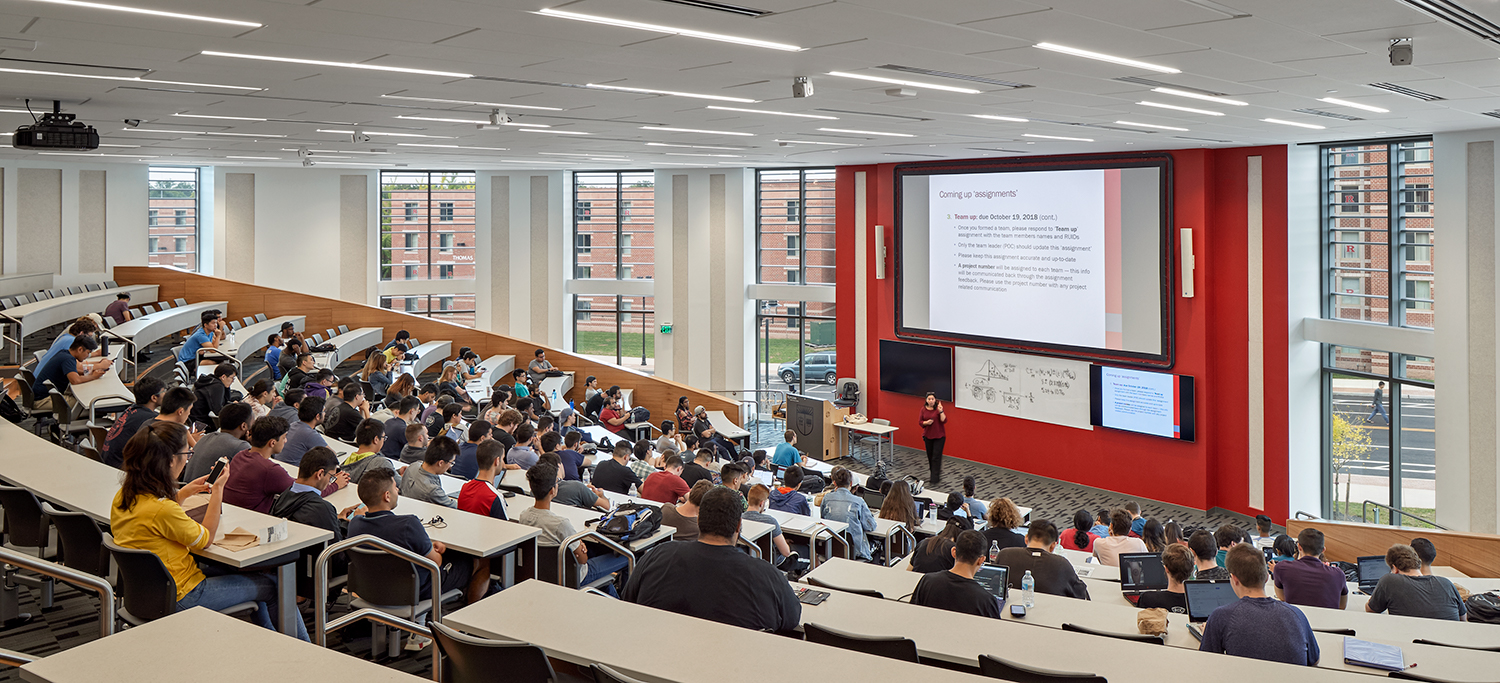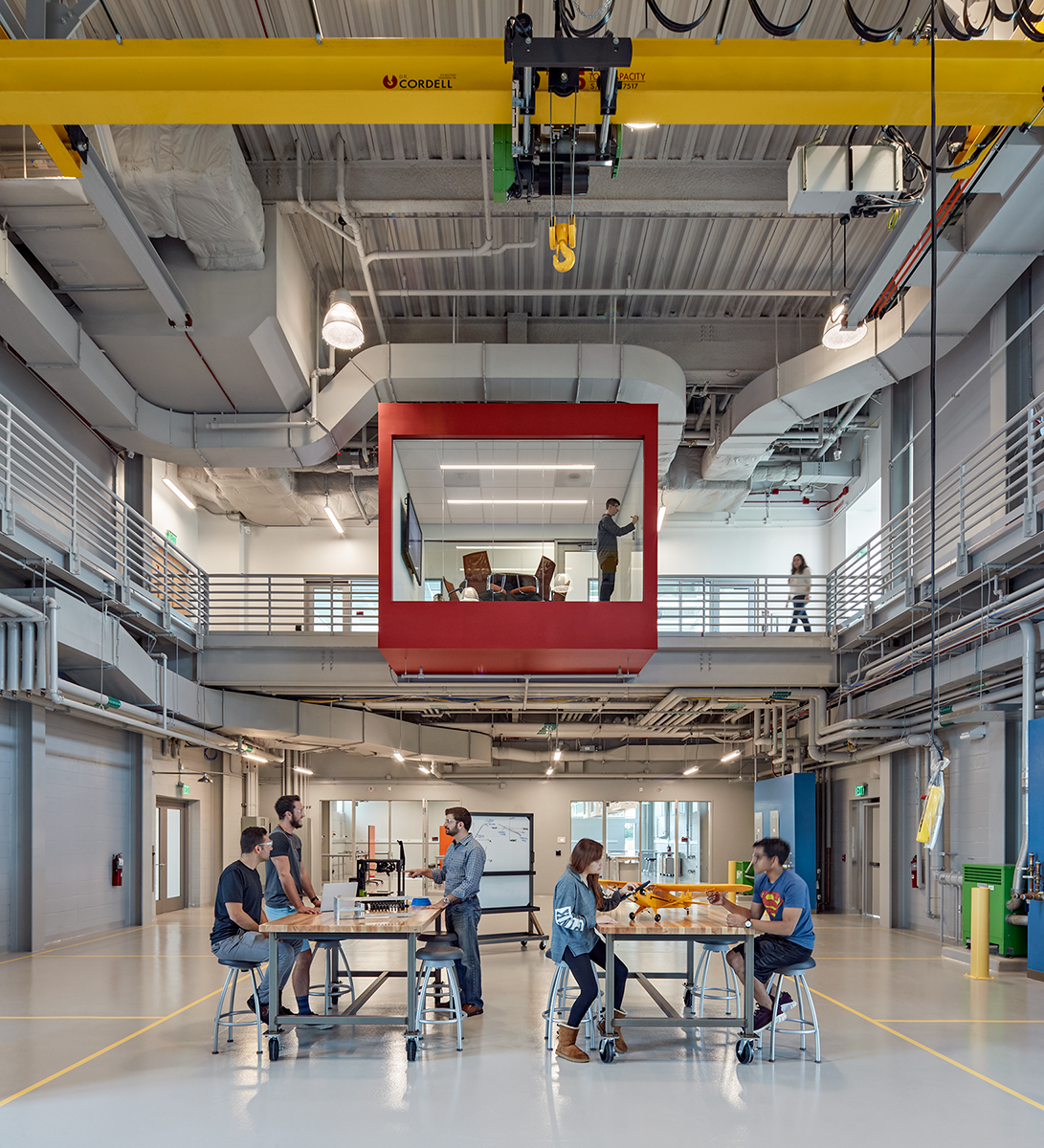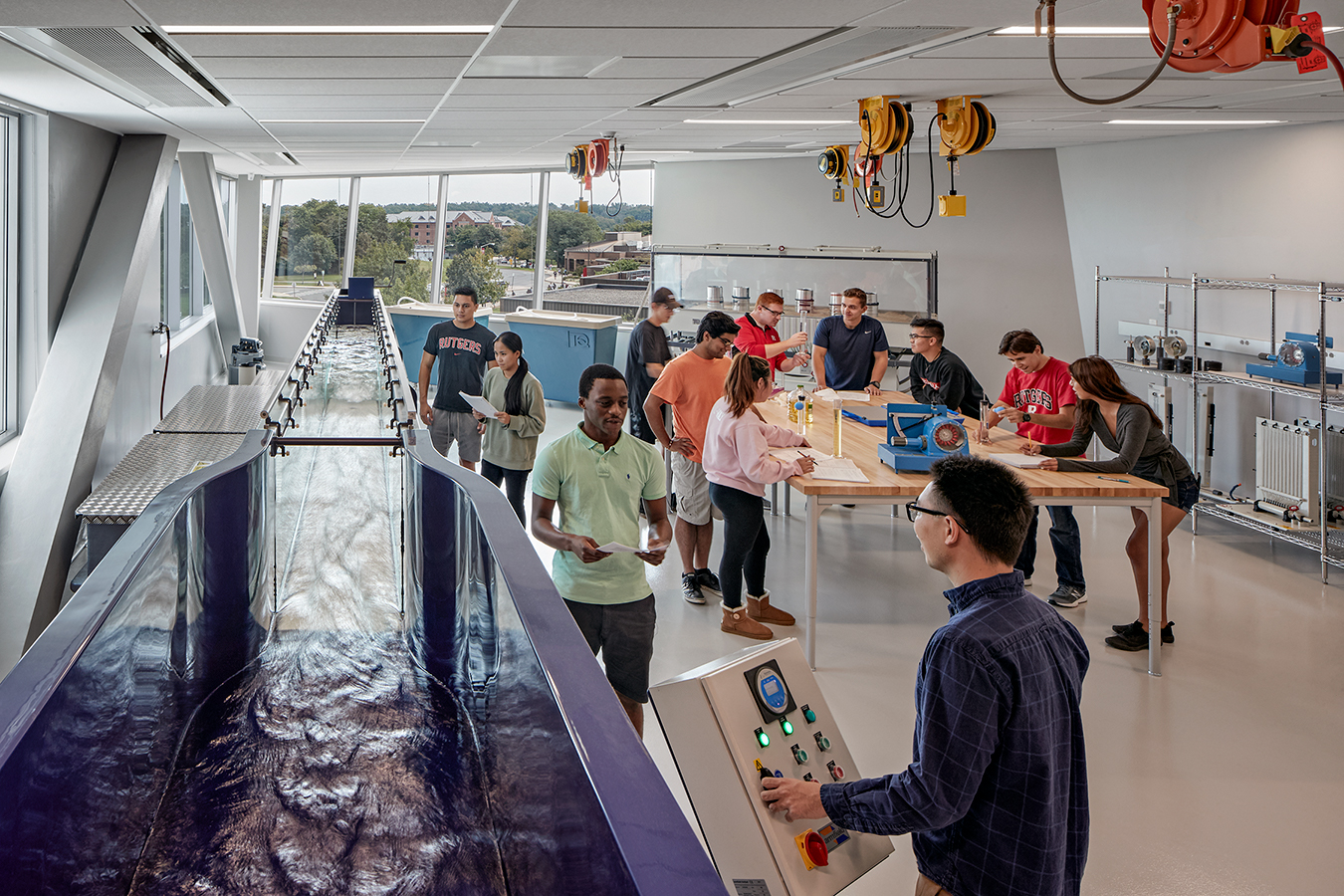array(8) {
["description"]=>
string(2293) "Richard Weeks Hall of Engineering is a new 5-story, 106,000 sq. ft. facility with state-of-the-art teaching suites and labs for concept development, pilot manufacturing, high-bay testing, rapid prototyping, and microfabrication in an interdisciplinary environment.
Three smart classrooms within Weeks Hall allow students to collaborate on projects. A 72-seat classroom has circular tables with computer support that allows students to project from their laptops or tablets to any of the monitors on the walls. A 144-seat classroom has seated rows built in a half-circle facing a podium where professors give lectures. Each seated level holds two tables, one in front of the other, and each chair fully rotates. A whiteboard makes up the back of each second row. Instructors can impart information and give students problems to analyze together.
Civil and environmental engineering labs include an urban coastal water systems lab for modeling and demonstrating flood risk reduction strategies; geo-environmental engineering labs focused on finding sustainability; and environmental process and molecular analysis laboratories with state-of-the-art instrumentation for measuring pollutants in air, water, and soil.
Weeks Hall includes a research terrace, the manufacturing pilot laboratory, and a rapid prototyping laboratory. The spaces are situated across three stories with extensive glass walls. The robotics lab has floor-to-ceiling glass on both walls to allow indoor and outdoor passersby to see what’s happening inside. A research terrace on the building’s second level lets people view the work there but keeps them from walking through the space and disturbing tests, such as those conducted for drone projects.
An innovation developed by the Rutgers team was the idea to create a research headwall, based on the multipurpose headwalls found in hospital rooms. Four plug-and-play headwalls were installed in the hope that the upfront investment would result in less expense in the long run. Each headwall has its own electrical subpanel delivering various voltages of power, compressed air, processed chilled water, local gas connections, dedicated exhaust, and local floor drains.
The building has been designed to LEED Silver standards.
"
["details"]=>
array(3) {
["location"]=>
string(14) "Piscataway, NJ"
["architect"]=>
string(25) "The S/L/A/M Collaborative"
["key_facts"]=>
array(1) {
[0]=>
array(1) {
["text"]=>
string(16) "110,000 sq. ft. "
}
}
}
["featured_image"]=>
int(928)
["full_width_images"]=>
array(1) {
[0]=>
int(928)
}
["left_column_images"]=>
array(6) {
[0]=>
int(929)
[1]=>
int(931)
[2]=>
int(933)
[3]=>
int(935)
[4]=>
int(937)
[5]=>
int(939)
}
["right_column_images"]=>
array(5) {
[0]=>
int(930)
[1]=>
int(932)
[2]=>
int(934)
[3]=>
int(936)
[4]=>
int(938)
}
["short_description"]=>
string(140) "State-of-the-art teaching suites and labs for concept development, pilot manufacturing, high-bay testing, prototyping, and microfabrication."
["client"]=>
string(18) "Rutgers University"
}
Richard Weeks Hall of Engineering
Richard Weeks Hall of Engineering is a new 5-story, 106,000 sq. ft. facility with state-of-the-art teaching suites and labs for concept development, pilot manufacturing, high-bay testing, rapid prototyping, and microfabrication in an interdisciplinary environment.
Three smart classrooms within Weeks Hall allow students to collaborate on projects. A 72-seat classroom has circular tables with computer support that allows students to project from their laptops or tablets to any of the monitors on the walls. A 144-seat classroom has seated rows built in a half-circle facing a podium where professors give lectures. Each seated level holds two tables, one in front of the other, and each chair fully rotates. A whiteboard makes up the back of each second row. Instructors can impart information and give students problems to analyze together.
Civil and environmental engineering labs include an urban coastal water systems lab for modeling and demonstrating flood risk reduction strategies; geo-environmental engineering labs focused on finding sustainability; and environmental process and molecular analysis laboratories with state-of-the-art instrumentation for measuring pollutants in air, water, and soil.
Weeks Hall includes a research terrace, the manufacturing pilot laboratory, and a rapid prototyping laboratory. The spaces are situated across three stories with extensive glass walls. The robotics lab has floor-to-ceiling glass on both walls to allow indoor and outdoor passersby to see what’s happening inside. A research terrace on the building’s second level lets people view the work there but keeps them from walking through the space and disturbing tests, such as those conducted for drone projects.
An innovation developed by the Rutgers team was the idea to create a research headwall, based on the multipurpose headwalls found in hospital rooms. Four plug-and-play headwalls were installed in the hope that the upfront investment would result in less expense in the long run. Each headwall has its own electrical subpanel delivering various voltages of power, compressed air, processed chilled water, local gas connections, dedicated exhaust, and local floor drains.
The building has been designed to LEED Silver standards.
Project Details
